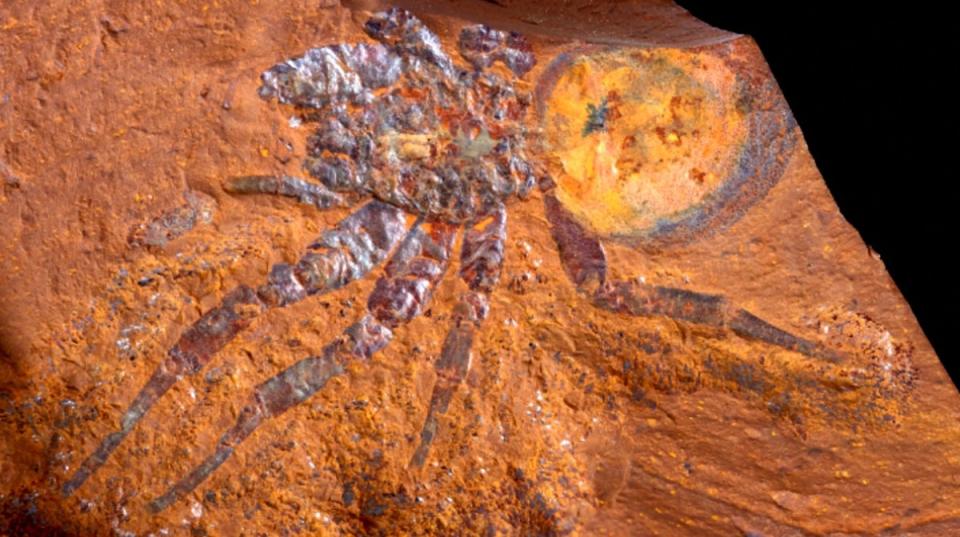Fossil of a Giant, 10-Million-Year-Old Trapdoor Spider Found Perfectly Preserved in Australia
Scientists in Australia have unearthed the fossil of a new genus of trapdoor spider believed to be anywhere from 11 to 16 million years old. And in addition to being the second largest spider fossil in the world and approximately five times larger than currently existing genus, the specimen has a lot to tell researchers about the evolution of the species.
The new species is named Megamonodontium mccluskyi after Australian National University associate professor and geospatial scientist Dr. Simon McClusky, who found the specimen. It was discovered at McGraths Flat in New South Wales. The fossil site is known for its iron-rich rock called goethite, which rarely produces exceptional fossils. However, in this instance, the spider was so well preserved that researchers were able to make out minute details in the body of the spider.

Michael Frese, Australian Museum
While Monodontium, the genus of brushed trapdoor spiders, tends to be on the smaller side, the new species is much larger. Its body measures just under an inch and would probably fit comfortably into the palm of your hand with its legs spread. The fact that a spider of that size is so well preserved makes the find that much more impressive.
But more importantly, it shows how the species once lived in Australia's mesic rainforest habitats before the continent turned arid and dry, according to Palaeontologist Dr. Matthew McCurry of the Australian Museum, which currently houses the specimen.
"Only four spider fossils have ever been found throughout the whole continent, which has made it difficult for scientists to understand their evolutionary history," McCurry said in a statement. "That is why this discovery is so significant, it reveals new information about the extinction of spiders and fills a gap in our understanding of the past."
"The closest living relative of this fossil now lives in wet forests in Singapore through to Papua New Guinea," he added. This suggests that the group once occupied similar environments in mainland Australia but have subsequently gone extinct as Australia became more arid."
Queensland Museum Arachnologist Dr. Robert Raven, supervising author of a study about the fossil published in the Zoological Journal of Linnean Society, explained another reason why it's rare to see the species preserved in a fossil.
"Not only is it the largest fossilized spider to be found in Australia but it is the first fossil of the family Barychelidae [brushed trapdoor spiders] that has been found worldwide," Raven said. "There are around 300 species of brush-footed trapdoor spiders alive today, but they don’t seem to become fossils very often. This could be because they spend so much time inside burrows and so aren’t in the right environment to be fossilized."

